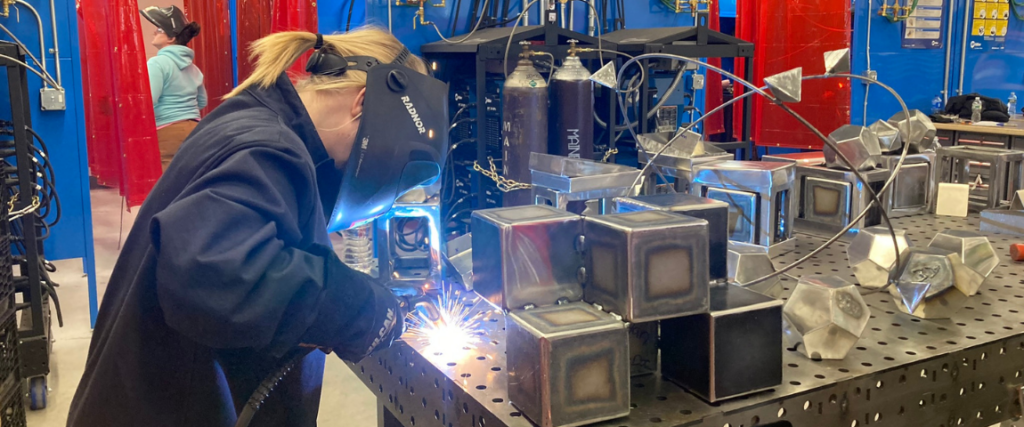Metal Fabrication

Through a unique combination of in-class and hands-on experience, students in the Metal Fabrication Program earn an associate in applied science degree at Central Maine Community College. The program focuses on practical, hands-on training that prepares individuals for employment in various industries where metalworking is essential.
Graduates can expect to make an average starting salary of $50,000 with an annual anticipated job growth rate of 3%.
Graduates are prepared to work in the tech sector, manufacturing, the marine industry, and small businesses as:
- Fabricators
- Welders
- Fitters
- Manual Machinists
- Pressmen
- Foundry Workers
- Tool Makers
A.A.S. STUDENTS WILL DEVELOP KNOWLEDGE AND SKILLS TO:
- Operate both MIG and TIG welding machines with proficiency, ensuring safety and quality in welding diverse materials.
- Master the operation of manual milling machines and lathes to accurately fabricate components according to specifications.
- Interpret engineering drawings skillfully, translating detailed designs into fabricated parts and assemblies.
- Demonstrate industry-specific knowledge of metallurgy, including the understanding of metal properties, processing, and applications.
- Program and operate a CNC plasma table with precision, showcasing advanced cutting techniques for various materials.
- Operate a CNC press brake, displaying expertise in metal bending and forming to achieve precise dimensions and angles.
- Perform sanitary TIG welding, including polishing and weld passivation, to ensure contamination-free welds in sensitive applications.
- Weld exotic metals such as aluminum, stainless steel, magnesium, and molybdenum, adapting welding techniques to material-specific properties.
- Cast aluminum components, applying knowledge of mold design, melting, and casting processes to produce quality parts.
- Apply safety protocols meticulously in the handling and processing of metal materials, promoting a safe and efficient working environment.


